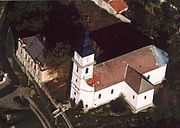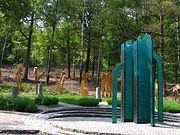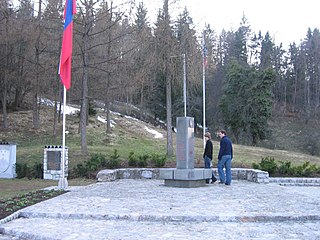
The Geometric Centre of Slovenia is the geometric centre of the country. Its geographic coordinates are 46°07′11.8″N14°48′55.2″E and its elevation is 644.842 m. It lies in the hamlet of Spodnja Slivna near Vače in the Municipality of Litija. Since 4 July 1982, it has been marked with a memorial stone designed by the architect Marjan Božič, about 50 m away from the given coordinates. A plaque reading Živimo in gospodarimo na svoji zemlji was added on 14 September 1989. In 2003, Slovenia adopted the Geometric Centre of Slovenia Act, which is a unique case in Europe.

Suchowola is a town in north-eastern Poland in Sokółka County in the Podlaskie Voivodeship, located on both banks of the Olszanka River. Its population is 2,196 (2017).
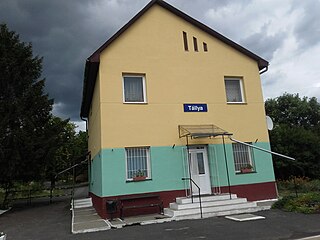
Tállya is a village in Borsod-Abaúj-Zemplén county, Northern Hungary, 45 kilometres from county seat Miskolc, in the famous Tokaj-Hegyalja wine district.

A pole of inaccessibility with respect to a geographical criterion of inaccessibility marks a location that is the most challenging to reach according to that criterion. Often it refers to the most distant point from the coastline, implying a maximum degree of continentality or oceanity. In these cases, a pole of inaccessibility can be defined as the center of the largest circle that can be drawn within an area of interest without encountering a coast. Where a coast is imprecisely defined, the pole will be similarly imprecise.
This article lists extreme locations on Earth that hold geographical records or are otherwise known for their geophysical or meteorological superlatives. All of these locations are Earth-wide extremes; extremes of individual continents or countries are not listed.

There has long been debate over the exact location of the geographical centre of the United Kingdom, and its constituent countries, due to the complexity and method of the calculation, such as whether to include offshore islands, and the fact that erosion will cause the position to change over time. There are two main methods of calculating this "centre": either as the centroid of the two-dimensional shape made by the country, or as the point farthest from the boundary of the country. These two methods give quite different answers.
This is a list of the extreme points of Europe: the geographical points that are higher or farther north, south, east or west than any other location in Europe. Some of these positions are open to debate, as the definition of Europe is diverse.

This is a list of the extreme points of the European Union — the points that are farther north, south, east or west than any other location.

Westerngrund is a community in the Aschaffenburg district in the Regierungsbezirk of Lower Franconia (Unterfranken) in Bavaria, Germany, and a member of the Verwaltungsgemeinschaft of Schöllkrippen. From 2013 to 2020, the geodetic centre of the European Union was located within the community's boundaries.
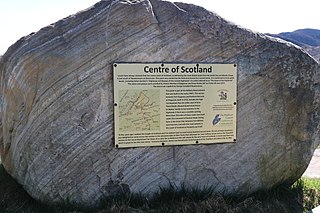
There is some debate as to the location of the geographical centre of Scotland. This is due to different methods of calculating the centre, and whether surrounding islands are included.
In geography, the centroid of the two-dimensional shape of a region of the Earth's surface is known as its geographic centre or geographical centre or gravitational centre. Informally, determining the centroid is often described as finding the point upon which the shape would balance. This method is also sometimes described as the "gravitational method".
The geographical center of Sweden is contested amongst at least four locations.
The geographical centre of Earth is the geometric centre of all land surfaces on Earth. Geometrically defined it is the centroid of all land surfaces within the two dimensions of the Geoid surface which approximates the Earth's outer shape. The term centre of minimum distance specifies the concept more precisely as the domain is the sphere surface without boundary and not the three-dimensional body.
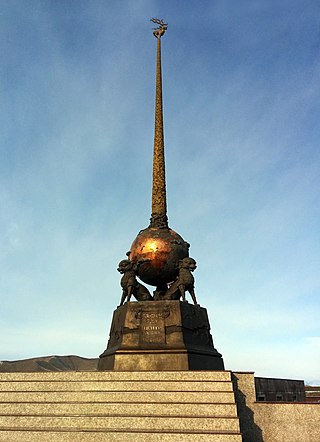
The location of the geographical centre of Asia depends on the definition of the borders of Asia, mainly whether remote islands are included to define the extreme points of Asia, and on the method of calculating the final result.

Dilove is a village located in Rakhiv Raion of Zakarpattia Oblast in Ukraine.








